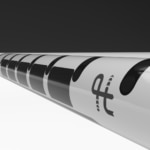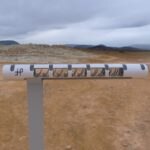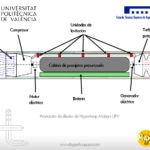Hyperloop: the fifth mode of transportation, capable of travelling at the speed of sound
“It is basically a train travelling within an airless vacuum tube. No air means no resistance and a highly efficient system,” explains Ángel Benedicto, one of the five students of the Polytechnic University of Valencia that won the first prize in the category of General Design and also winners in the Propulsion/Compression Subsystem Technical Excellence, organized by SpaceX, the US aerospace company, and the University of Texas A&M.

As a concept, Hyperloop seems capable of revolutionizing the transport industry and, therefore, generating a positive economic impact that would come from connecting remote. It would, for example, be capable of disrupting the real-estate market, for example, as it would only take 10 minutes to commute between two cities located at, say, 100 kilometers from each other… about the same amount of time it takes the subway to travel two subway stations. The unmanned service would be able to cover the distance separating Los Ángeles-San Francisco or Madrid-Barcelona in just 30 minutes. The pods, which could accommodate up to 30 passengers, could reach speeds of up to 1,200 kilometers per hour. Hyperloop is the brainchild of Elon Musk: Cofounder of Tesla Motors, Paypal or SpaceX.
It was an interview in a newspaper that tied the destinies’ of these five UPV students’ to Elon Musk's. “Daniel Orient was reading an interview with Elon Musk, in which he said that ‘with Hyperloop airplanes would make no sense inside the US’. Of course, the first thing my friend Dani and I, being aeronautical engineers, thought was: 'There go our jobs!” recounts Ángel Benedicto. They grew so tickled by Musk’s words that they decided to enter the SpaceX contest. “We would meet at lunchtime and start saying whatever crazy idea would pop up in our heads, a ‘brainstorming’ of crazy senseless ideas - which usually end up being the best. And we just went ahead with it all,” explains Ángel.

What would Hyperloop be like?
“Basically two isles of passengers, equipped with harnesses and screens simulating the surroundings, because you wouldn’t be able to see anything inside the steel tube,” says Ángel Benedicto, who also explains that travel times would be so short that travel classes would make no sense inside the pod carrying the people. Each “individual pod would accommodate 28 to 30 passengers, with short departure times between each other.” It is more efficient to have more trains leaving more frequently than a larger pod capable of carrying more passengers," says the UPV student.
The first Hyperloop project was plotted considering a smaller tube than the one proposed by the engineers from Valencia: The design has grown from 1.70 m in diameter to 2 meters. Also, the seats are now leaning back to provide more room for the passengers.

The secret to high-speed
One of the reasons why long-distance airplanes need to climb so high to cover their routes is air density. As resistance dwindles and travel efficiency increases, the craft starts beating the clock. The historic ‘Concorde’ was able to cover the France-US route in half the regular time thanks to the high-altitude it was capable of reaching: 18,000 meters at a cruise speed of 2,100 kilometers per hour. This is the effect that Hyperloop’s steel tube seeks to replicate, and that’s why its creators argue that short trips make no sense. It will take years for the project to be completed and for society to start reaping the benefits of this mode of transport:
Beyond efficiency, the hyperloop also yields clear cost advantages: “It is much cheaper to build than a high-speed railway. To lay the tracks for a high-speed train like the AVE in Spain, you need gravel, the catenary, the rails… “Hyperloop is just a steel tube and the columns on which it rests,” says Ángel Benedicto, who also believes that this mode of transport would be much safer than existing ones: “In a closed tube you cannot derail, you cannot fall, there is nothing you can collide against, because there are no obstacles,” he concludes.